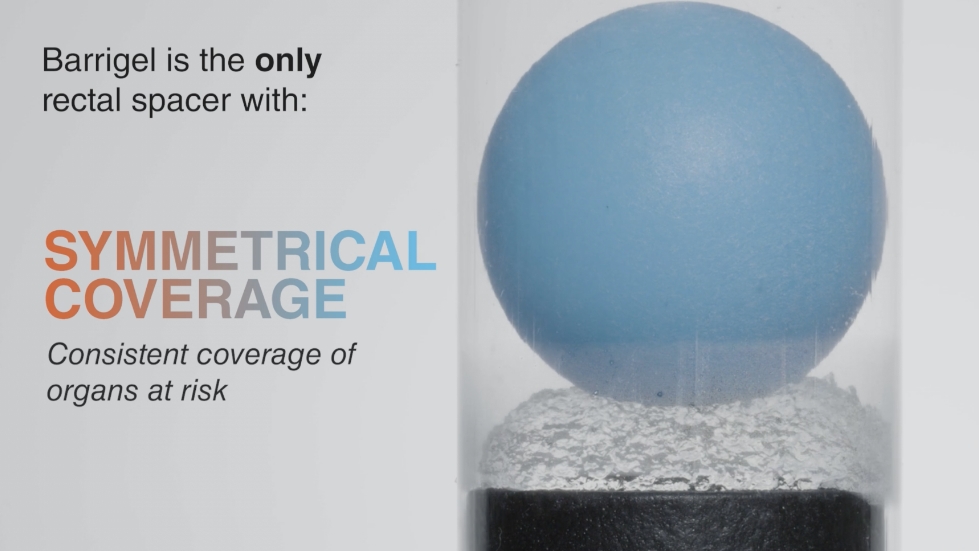Proven safe and effective
BARRIGEL

“When I talk to my patients about Barrigel, the biggest thing I like to focus on is the protection, as well as the very low rate of complications. When I explain to my patients that, in the real world, a rectal complication has happened zero times with Barrigel and as much as 50% of the time with PEG hydrogel, it’s a no-brainer.”

– Varun Sundaram, MD, Urologist, Urology Austin
TREATMENT PROTOCOL
Radiation delivered with Hypofractionated regimen of
Hypofractionated radiation therapy (HFRT) – effective and more convenient
The utilization of HFRT has dramatically increased in recent years because it gives:4
- Excellent tumor control
- Low level of side effects
- Increased convenience for patients, compared with a conventional fractionation schedule
While this modern form of radiation allows for higher doses given in fewer fractions, the rectum remains at risk for exposure. Given that HFRT has been associated with greater acute grade 2+ GI toxicity than conventionally fractionated radiation therapy (CFRT), rectal spacing may address a clinically important need for the large volume of patients receiving this effective and convenient treatment.1
The Barrigel pivotal trial is the FIRST FDA-reviewed randomized controlled study of rectal spacing using hypofractionated radiation therapy.

“There is a need for rectal spacing, even when radiation techniques have become more precise, because with these technique advances, we’ve also increased the dose given to patients over shortened, hypofractionated treatment schedules. And while greater dose means greater control and better outcomes, the prostate still remains very close to the rectum. So if we can increase that space, we also decrease the high dose to the rectum, thereby decreasing the toxicity.”

– Neil Mariados, MD, Radiation Oncologist, Cancer Care of Western New York
Barrigel is proven effective at achieving a clinically significant reduction in radiation dose to the rectum, leading to fewer rectal side effects
In the Barrigel pivotal trial,
98.5% OF PATIENTS
met the primary endpoint of achieving
at least a 25% reduction in rectal
V54 Gy* (p<0.001)
*54 Gy is 90% of 60 Gy
Barrigel is the only rectal spacer with proven reduction of acute grade 2+ GI toxicity compared to control, leading to fewer side effects
Barrigel is also the only rectal spacer proven superior in the reduction of grade 1+ GI toxicity at 3 and 6 months, compared to control.1,2
In the Barrigel pivotal trial, there were:1
-
ZERO Barrigel-related adverse events
-
ZERO Peri-procedural events
-
ZERO Adverse events of rectal fullness
-
ZERO Patient complaints of rectal pain or discomfort following the procedure
To date, there have been:
-
ZERO Barrigel adverse events2,5
-
ZERO Embolisms reported in the MAUDE database5

“The ability to control where the gel goes allows for a symmetric and significant distribution of gel at the apex, where radiation damage is most likely to occur. This results in better protection for the patient.”

– Varun Sundaram, MD, Urologist, Urology Austin
BARRIGEL
Sculptable control over implant placement results in more symmetric coverage over the whole posterior rectal/prostate interface1
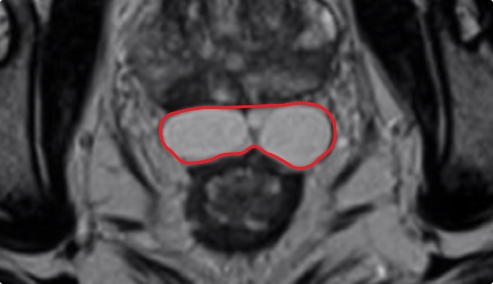
RESULTS6 >95%
Pivotal Trial Patients; % of implants centered on prostate midline
PEG HYDROGEL
Lack of control over placement of the implant can result in uneven and inconsistent coverage
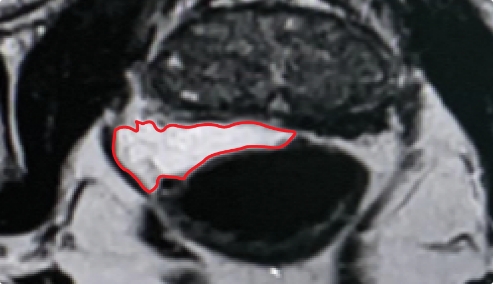
RESULTS7 49%
Pivotal Trial Patients; % of implants centered on prostate midline
First Barrigel Cases - Consecutive Patients (Same Day)
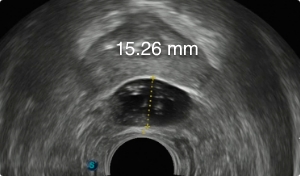
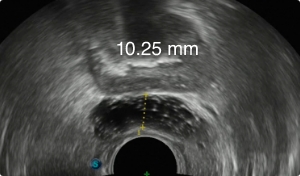
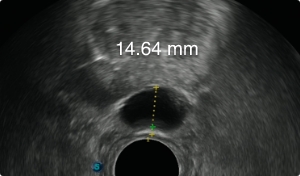
Urologist; New York, United States

“As a urologist new to spacing I found this procedure very easy to learn with great results. I know exactly where Barrigel is going during the procedure in real-time, so I have high confidence the spacing is adequate and safe.”

– Daniel R. Welchons, MD, Principal Urologist, Associated Medical Professionals (AMP) of New York
Barrigel maintains space throughout the course of treatment. Even as Barrigel gradually resorbs, the space created remains stable for 3 months, on average, with no implant migration.1
PATIENT EXAMPLE SHOWING
STABLE SEPARATION DURING RESORPTION
IMMEDIATELY POST-INJECTION
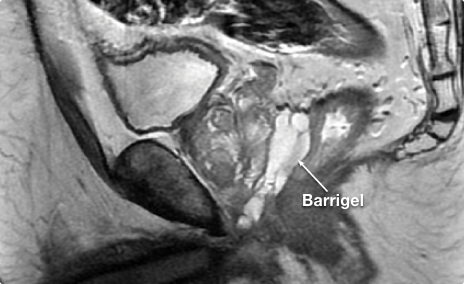
3 MONTHS POST-INJECTION
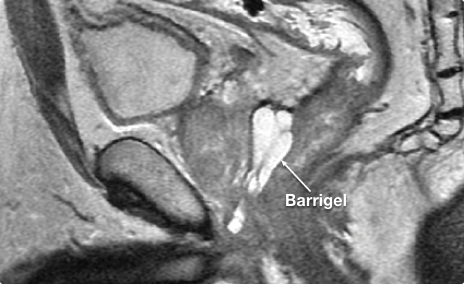
IMMEDIATELY POST-INJECTION
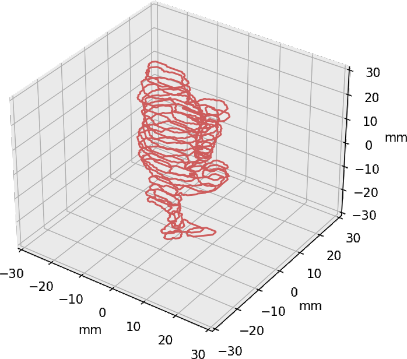
3 MONTHS POST-INJECTION
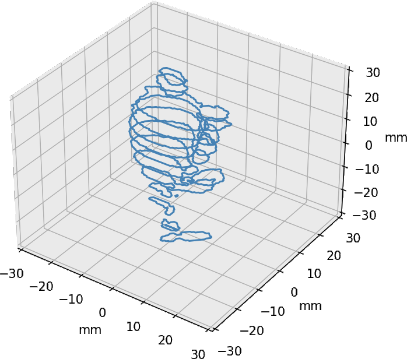
As demonstrated in these 3D extracted Barrigel contours (above), Barrigel loses volume over time, but maintains its shape1
As demonstrated in these 3D extracted Barrigel contours (above), Barrigel loses volume over time, but maintains its shape1
MEAN PROSTATE-RECTUM SEPARATION (DIMENSIONAL STABILITY)
REFERENCES:
- Mariados NF, Orio PF III, Schiffman Z et al. Hyaluronic acid spacer for hypofractionated prostate radiation therapy: A randomized clinical trial. JAMA Oncol. 2023: e1-e8.
- Data on file. Palette Life Sciences.
- Mariados N, Sylvester J, Shah D. Hydrogel Spacer Prospective Multicenter Randomized Controlled Pivotal Trial: Dosimetric and Clinical Effects of Perirectal Spacer Application in Men Undergoing Prostate Image Guided Intensity Modulated Radiation Therapy. Int J Radiat Oncol Biol Phys. 2015 Aug 1;92(5):971-977.
- Dearnaley D, Syndikus I, Mossop H et al. Conventional versus hypofractionated high-dose intensity-modulated radiotherapy for prostate cancer: 5-year outcomes of the randomised, non-inferiority, phase 3 CHHiP trial. Lancet Oncol. 2016;17:1047–60.
- MAUDE Database. https://accessdata.fda.gov. Accessed 6/22/2023.
- King M, Svatos M, Chell EW. Assessment of NASHA Spacer Symmetry For Prostate Radiation Therapy. [ABSTRACT] Presented at American Brachytherapy Society Annual Conference, June 19, 2022.
- Fischer-Valuck BW, Chundury A, Gay H. Hydrogel spacer distribution within the perirectal space in patients undergoing radiotherapy for prostate cancer: Impact of spacer symmetry on rectal dose reduction and the clinical consequences of hydrogel infiltration into the rectal wall. Pract Radiat Oncol. 2017 May-Jun;7(3):195-202.
